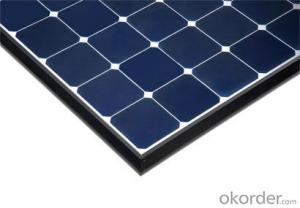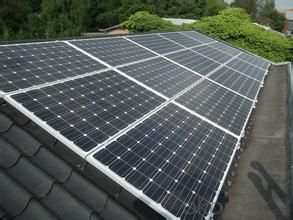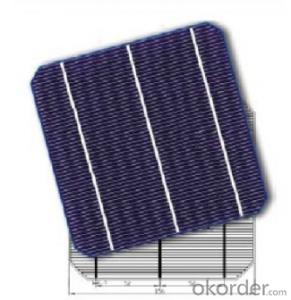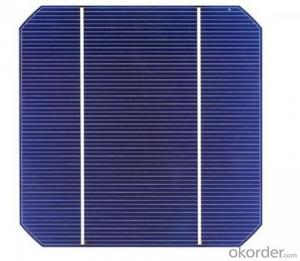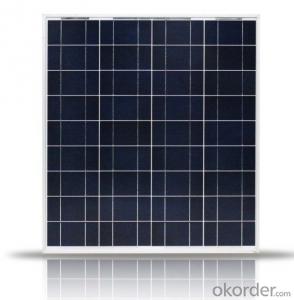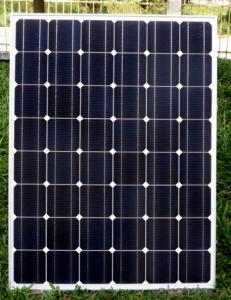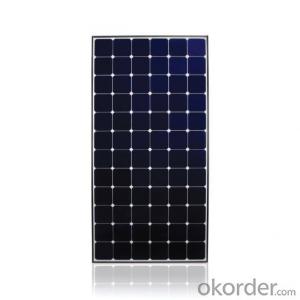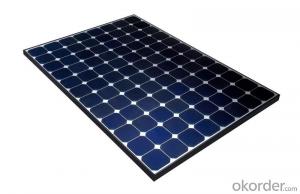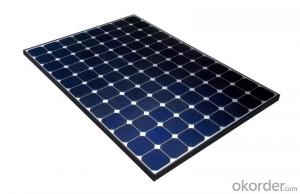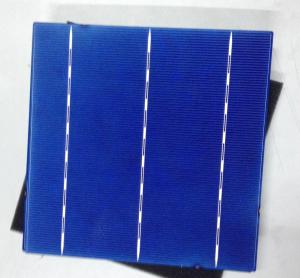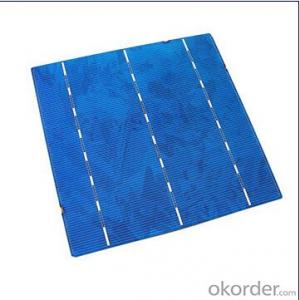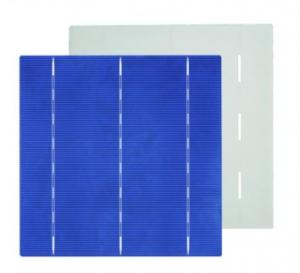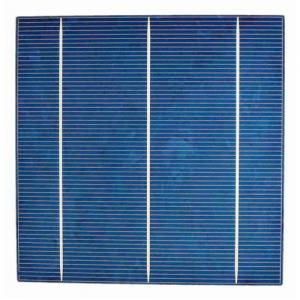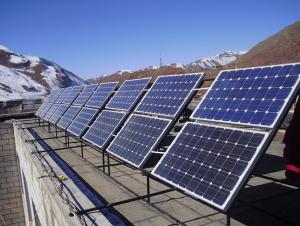Foldable Solar Cells - Poly Solar Panel 25W A Grade with 12 Years Warranty
- Loading Port:
- Shanghai
- Payment Terms:
- TT OR LC
- Min Order Qty:
- 100 watt
- Supply Capability:
- 1000 watt/month
OKorder Service Pledge
OKorder Financial Service
You Might Also Like
Specification
Poly Solar Panel 25W A Grade with 12 Years Warranty
Production description
Photovoltaics were initially solely used as a source of electricity for small and medium-sized applications, from the calculator powered by a single solar cell to remote homes powered by an off-grid rooftop PV system. As the cost of solar electricity has fallen, the number of grid-connected solar PV systems has grown into the millions and utility-scale solar power stations with hundreds of megawatts are being built. Solar PV is rapidly becoming an inexpensive, low-carbon technology to harness renewable energy from the Sun.
The International Energy Agency projected in 2014 that under its "high renewables" scenario, by 2050, solar photovoltaics and concentrated solar power would contribute about 16 and 11 percent, respectively, of the worldwide electricity consumption, and solar would be the world's largest source of electricity. Most solar installations would be in China and India.[2]
Photovoltaics were initially solely used as a source of electricity for small and medium-sized applications, from the calculator powered by a single solar cell to remote homes powered by an off-grid rooftop PV system. As the cost of solar electricity has fallen, the number of grid-connected solar PV systems has grown into the millions and utility-scale solar power stations with hundreds of megawatts are being built. Solar PV is rapidly becoming an inexpensive, low-carbon technology to harness renewable energy from the Sun.
Commercial concentrated solar power plants were first developed in the 1980s. The 392 MW Ivanpah installation is the largest concentrating solar power plant in the world, located in the Mojave Desert of California. The 579 MW Solar Star, nearRosamond, California, is the world's largest PV power station.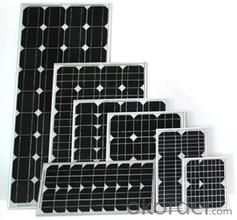
Application
Commercial
Industrial
Residential
Product Feature
12 years quality warranty 25 years performance output.
Free for less than 5 pcs sample requirement
Free to replace or repair or refund if products fail to conform to the PI requirement.
Packaging
28pcs into carton 2carton into pallets 28pallets into a 40ft container
Delivery
After 25 days for manufacturered goods as soon as we received full payment.
After 10 days for stock goods as soon as we received full payment.
- Q: What is the role of combiners in solar cell systems?
- The role of combiners in solar cell systems is to combine or merge the electrical outputs from multiple solar panels into a single output. This allows for increased efficiency and power generation by effectively utilizing the energy produced by each individual panel.
- Q: Are there any books in the market t about solar cells and their applications?
- You can try to search online about the application of solar cells.
- Q: Can solar cells be used in telecommunications infrastructure?
- Yes, solar cells can be used in telecommunications infrastructure. They can provide a reliable and sustainable power source for various telecom equipment such as mobile phone towers, repeaters, and base stations. Solar cells are particularly suitable for remote or off-grid areas where access to conventional power sources is limited. Additionally, their installation can reduce operational costs and environmental impact, making them an increasingly popular choice in the telecommunications industry.
- Q: Can solar cells be installed on sloped surfaces?
- Yes, solar cells can be installed on sloped surfaces. In fact, solar panels are commonly installed on sloped rooftops to harness sunlight efficiently. However, the angle of the slope may affect the overall energy output, so it is important to consider the optimal tilt and orientation of the solar panels for maximum efficiency.
- Q: How do solar cells perform in areas with high levels of light pollution?
- Solar cells do not perform as efficiently in areas with high levels of light pollution. The excessive artificial light can interfere with the ability of solar cells to absorb and convert sunlight into electricity. This results in reduced power output and lower overall performance of the solar cells.
- Q: Can solar cells be used on backpacks or camping gear?
- Yes, solar cells can be used on backpacks or camping gear. They can be integrated into the design of backpacks or attached to camping gear to harness solar energy and convert it into electricity, allowing for convenient charging of devices or powering small electronics while on the go.
- Q: How do solar cells perform in cloudy weather?
- Solar cells do not perform as efficiently in cloudy weather compared to sunny conditions, as they rely on direct sunlight to generate electricity. However, they can still generate some electricity, albeit at a reduced rate, as they can absorb diffuse sunlight and convert it into energy.
- Q: How do solar cells perform in areas with frequent hurricanes?
- Solar cells can still perform efficiently in areas with frequent hurricanes, provided they are properly installed and designed to withstand severe weather conditions. It is crucial to use durable materials and secure mounting systems to ensure the panels are not damaged or dislodged during high winds. Additionally, incorporating measures like reinforced frames and hurricane-resistant glass can further enhance their resilience. However, it is important to note that extreme weather events may temporarily disrupt solar power generation due to damaged infrastructure or reduced sunlight availability.
- Q: How can I calculate the cost of using solar cells if I put a fully-functional solar system in my house?
- Sunrun solar lets you get started for as little as $0 down, but to install it, it will cost you a lot.
- Q: Can solar cells be used to power water pumps?
- Yes, solar cells can definitely be used to power water pumps. Solar cells convert sunlight into electricity, making them a sustainable and renewable energy source. This electricity can be used to power water pumps and provide a reliable and environmentally friendly solution for pumping water.
Send your message to us
Foldable Solar Cells - Poly Solar Panel 25W A Grade with 12 Years Warranty
- Loading Port:
- Shanghai
- Payment Terms:
- TT OR LC
- Min Order Qty:
- 100 watt
- Supply Capability:
- 1000 watt/month
OKorder Service Pledge
OKorder Financial Service
Similar products
Hot products
Hot Searches
Related keywords
